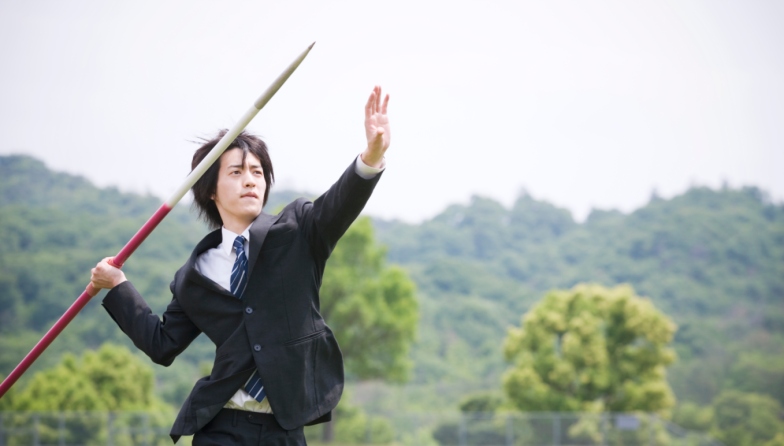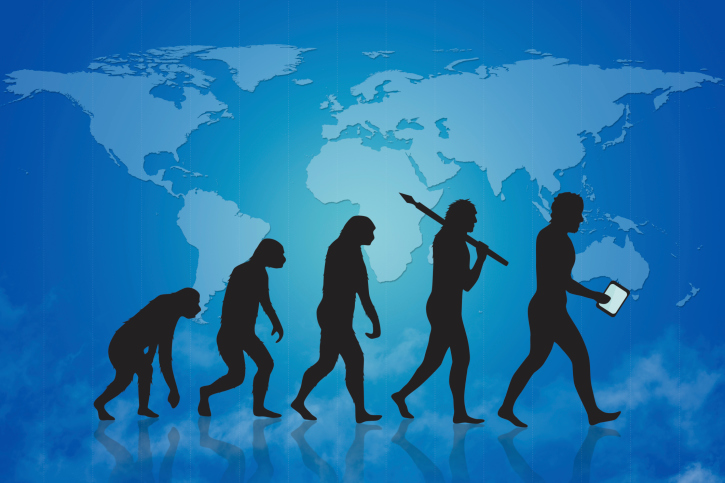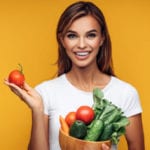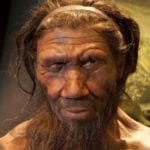 Music
Music  Music
Music  History
History 10 Less Than Jolly Events That Occurred on December 25
 Weird Stuff
Weird Stuff 10 Funny Ways That Researchers Overthink Christmas
 Politics
Politics 10 Political Scandals That Sent Crowds Into the Streets
 Weird Stuff
Weird Stuff Ten Bizarre Facts About The Doge Meme
 Our World
Our World 10 Ways Your Christmas Tree Is More Lit Than You Think
 Movies and TV
Movies and TV The 10 Coolest Stars to Set Sail on The Love Boat
 History
History 10 Things You Didn’t Know About the American National Anthem
 Technology
Technology Top 10 Everyday Tech Buzzwords That Hide a Darker Past
 Humans
Humans 10 Everyday Human Behaviors That Are Actually Survival Instincts
 Music
Music 10 Surprising Origin Stories of Your Favorite Holiday Songs
 History
History 10 Less Than Jolly Events That Occurred on December 25
 Weird Stuff
Weird Stuff 10 Funny Ways That Researchers Overthink Christmas
Who's Behind Listverse?

Jamie Frater
Head Editor
Jamie founded Listverse due to an insatiable desire to share fascinating, obscure, and bizarre facts. He has been a guest speaker on numerous national radio and television stations and is a five time published author.
More About Us Politics
Politics 10 Political Scandals That Sent Crowds Into the Streets
 Weird Stuff
Weird Stuff Ten Bizarre Facts About The Doge Meme
 Our World
Our World 10 Ways Your Christmas Tree Is More Lit Than You Think
 Movies and TV
Movies and TV The 10 Coolest Stars to Set Sail on The Love Boat
 History
History 10 Things You Didn’t Know About the American National Anthem
 Technology
Technology Top 10 Everyday Tech Buzzwords That Hide a Darker Past
 Humans
Humans 10 Everyday Human Behaviors That Are Actually Survival Instincts
10 Surprising Facts About Humanity’s Strange Evolution
As scientists continue to explore our evolutionary history, new facts have emerged to explain how the past shaped modern humans, from the size of our brains to the length of our lives. Even more intriguing is how much random chance played a role in creating the brains and bodies we have today.
10Human Faces Evolved To Take A Punch

Until recently, it was widely believed that robust human faces evolved some four or five million years ago to help our Australopithecus ancestors chew hard foods like nuts. But that belief has now been shattered—by a punch to the face
According to a study from the University of Utah, our distant past was not as peaceful as we once believed. Violence may have played a much bigger part in the evolution of human physiology than we ever suspected.
The researchers believe that human males developed robust faces to minimize injury from punches during fights over women, food, and territory. The bones that became the strongest are the same bones that are most likely to be fractured in a hand-to-hand fight. They’re also the bones that show the most difference between male and female skulls. Apparently, male faces needed to evolve greater robustness because the bones that break in fights are larger in men.
If this theory is true, humans weren’t noble savages made violent by civilization. Instead, our physical features evolved to improve our fighting performance.
9Human Hands Evolved For Punching

At the same time that our faces evolved to take a punch, our hands evolved to give one. An earlier study by the same University of Utah researchers found that human hands actually developed in a paradoxical way. When compared to apes, the same features that allow us to clench our fists—shorter palms and fingers as well as longer, stronger, and more flexible thumbs—also give us the dexterity to make and use delicate tools. But that’s not true of apes—while chimps can make tools, apes can’t clench their fists.
It’s also possible that our hands developed from the same genes that gave us shorter toes and a longer big toe when we began walking and running upright.
The researchers believe that our aggressive, violent nature caused our bodies to evolve into fighting machines. A human that punches with a clenched fist can strike harder without hurting himself. Fists can also be used for intimidation. Ultimately, our hands—with their ability to both kill and create—may define the good and evil in human nature.
8We Had Herpes Before We Were Human

It isn’t just our physical characteristics that evolved over time. Certain diseases, such as herpes, also made the leap from chimpanzees to modern humans.
About 67 percent of modern humans have at least one herpes simplex virus (HSV). In fact, humans are the only primates that have two HSVs, which usually manifest themselves as cold sores on the mouth or blisters on the genitals. HSV-1 infected humans before they evolved from chimpanzees six million years ago. HSV-2 jumped from ancient chimps to our ancestors about 1.6 million years ago. Scientists at the University of California believe that understanding the origins of these viruses will help us prevent other viruses from making the jump into humans.
Another group of scientists from Oxford University and Plymouth University have discovered ancient viruses from Neanderthals in modern human DNA. These viruses come from the HML2 family and may be linked to cancer and HIV in modern humans, making them useful as a potential therapy target in the future.
7Humans Are The Only Primates Whose Tooth Size Decreases As Brain Size Increases

For the past 2.5 million years, two trends in human evolution have been linked—brain size has increased while tooth size has decreased. We’re the only primates who can make that claim.
Usually, when the brain grows, so do the teeth, because the body needs more energy from food consumption. So scientists call what happened to humans an “evolutionary paradox.” They believe it could happen because humans started to eat more meat, which nourished our brains.
Humans are also the only primates to develop thick tooth enamel. Plant-eating primates have the thinnest enamel. Apes and monkeys that eat both plants and animals have medium-thick enamel. Humans have the thickest enamel, presumably to crush tough foods. For scientists, thick human tooth enamel has another benefit—it helps them to determine the age and diet of human fossils.
On a side note, Neanderthals are the oldest documented hominids to use toothpicks to ease the pain of dental diseases such as sore gums.
6Our Common Male And Female Ancestors Lived Around The Same Time

Researchers often use the name “Y-chromosomal Adam” to refer to our most recent common male ancestor. Men normally have one X chromosome and one Y chromosome. Women have two X chromosomes.
According to a study published in the European Journal of Human Genetics, “Adam” probably lived around 209,000 years ago.
This model contradicts a previous paper from the University of Arizona, which suggested that the Y chromosome predates humanity. The Arizona researchers believed the Y chromosome of modern human males was created by interbreeding among species over 500,000 years ago. But the authors of the newer study claim that the methodology of the Arizona research, if interpreted properly, would create a “space-time paradox whereby the most ancient individual belonging to Homo sapiens species has not yet been born.”
The newer study also places the Y-chromosomal Adam around the time of “Eve,” the most recent genetic female ancestor of modern humans. However, the researchers argue that there really was no single Adam and Eve. Instead, there were groups of Adams and Eves roaming the world together.
5Grandmas Helped Us Live Longer

Grandmothers made us who we are. That’s the conclusion of University of Utah researchers who ran computer simulations to test the famous “Grandmother Hypothesis.” According to this evolutionary theory, humans developed longer lifespans than apes because human grandmothers helped feed their grandchildren. Other primates find their own food after being weaned by their mothers.
When human grandmothers helped feed their weaned grandchildren, their daughters could have more children faster. The simulations showed it took less than 60,000 years for humans to develop from females dying after their childbearing years to living decades past menopause.
Many anthropologists believe that our increasing brain size drove our longevity. But the Utah researchers controlled for brain size, hunting, and pair bonding. When they introduced even the weakest grandmother effect into their simulations, human lifespans increased dramatically. They concluded that grandmothers contributed to—or even caused—such important changes in human evolution as bigger brains, social dependence, and our tendency to work together.
4A Protein May Have Allowed Bigger Brains In Humans

Researchers from the University of Colorado have another theory as to why the human brain evolved so rapidly in size and complexity. These scientists found that a protein domain, which is a specific unit within a protein, occurs in greater numbers in humans than in other animals. The protein domain is DUF1220, and the more copies you have, the bigger your brain. Humans have 270 copies in their genome. Next highest are chimpanzees with 125 and gorillas with 99. Mice have only one copy. This means that brain size may depend greatly on the protein domain.
Also contributing to human brain size was the challenge to find scarce insects to eat, which developed our problem-solving skills and advanced tool usage. But a larger brain wasn’t the only factor in humans evolving beyond chimps. We also have more complex gene activity in the brain, which helps with learning.
3Throwing Made Us Human

The throwing skills of modern baseball players evolved from our extinct human ancestors. Early humans learned to throw rocks and sharpened wooden spears to aid in hunting almost two million years ago. According to researchers from George Washington University and Harvard University, even chimpanzees can’t match our skills. At best, chimps can throw about one-third as fast as a 12-year-old Little League pitcher.
The researchers wanted to find out how humans throw so well. While recording college baseball players pitching, the scientists realized that the human shoulder acts like a slingshot by storing and releasing energy during the throw. Certain features in the human torso, shoulder, and arm evolved specifically to help us store this energy.
These throwing skills allowed our ancestors to kill and eat big game. The consumption of that meat spurred the evolution of our large brains and bodies, and allowed us to travel to new parts of the world. So our ancestors’ unique ability to throw also helped to make us human.
2Human Longevity May Come From Our Extremely Slow Metabolisms

Humans and other primates burn 50 percent fewer calories than other mammals. That means a human would have to run a marathon to even come close to burning the same number of calories that a non-primate mammal of the same size would on an average day.
According to a recent study, our slow metabolisms may explain why we grow up so slowly, have children so infrequently, and live for so long. It may also explain why we have so many weight-loss programs. But if you’re working out and having trouble losing weight, the study may give you an excuse. It also found that primates caged in zoos use as much energy as their counterparts roaming the wild, implying that physical activity might affect the number of calories burned daily less than we thought.
By comparison, most mammals, like our pet dogs and hamsters, live fast and die young—often in their teens or earlier. The researchers believe environmental conditions influenced the evolution of the slow metabolisms that give us our long lives.
1Twists Of Fate Caused Human Evolution

Scientists at the University of Chicago engaged in “molecular time travel” to see how human evolution could have turned out differently. They started with an important human protein as it existed hundreds of millions of years ago. The protein would eventually become the cellular receptor for the stress hormone cortisol.
The biologists wanted to discover how that ancient protein evolved to become sensitive to cortisol. After studying thousands of alternative histories, they found only one answer—and it was completely random. Two extremely unlikely mutations had to occur to permit the protein to evolve its sensitivity to cortisol. In other words, the protein’s modern form occurred because of a twist of fate in our ancient past.
The researchers believe that a series of low-probability random events—twists of fate—affected the proteins that made us who we are. If proteins evolve new functions this way, that could explain the diversity and genetic variety of life. It also means that, with a few different genetic twists of fate, humans might have evolved into a different creature entirely.








